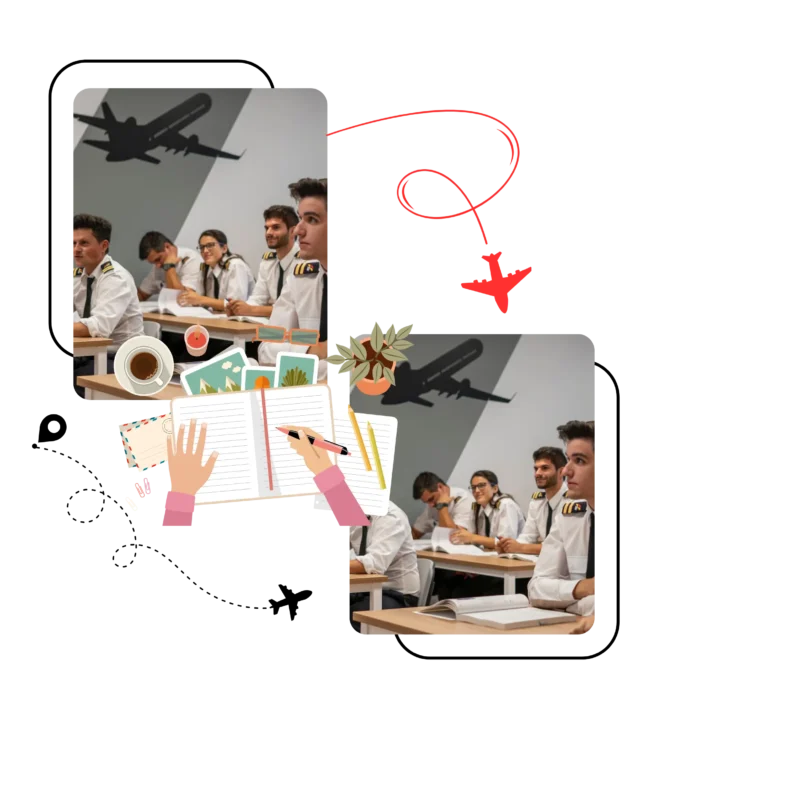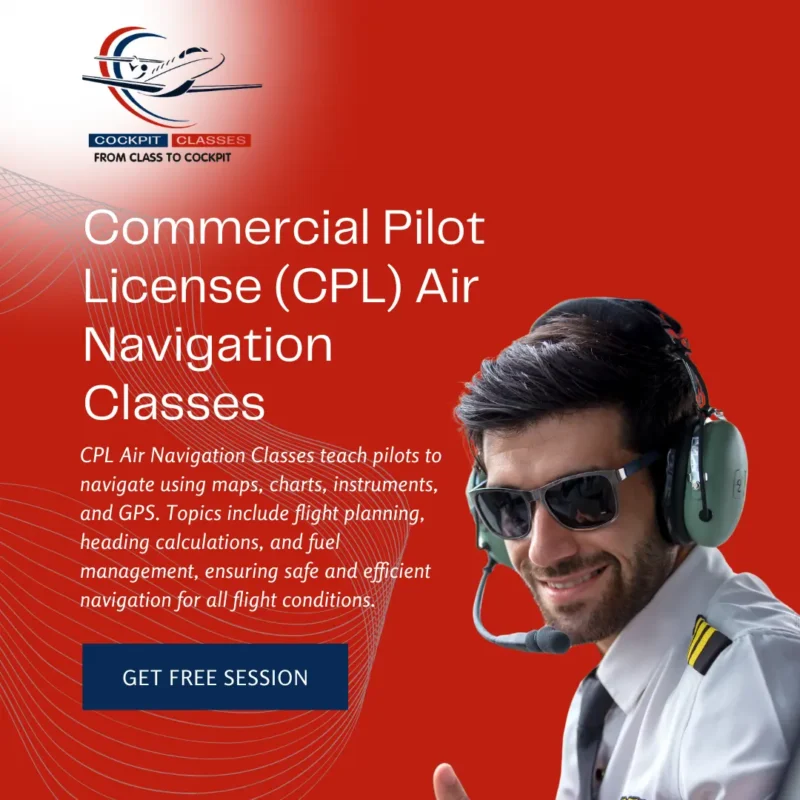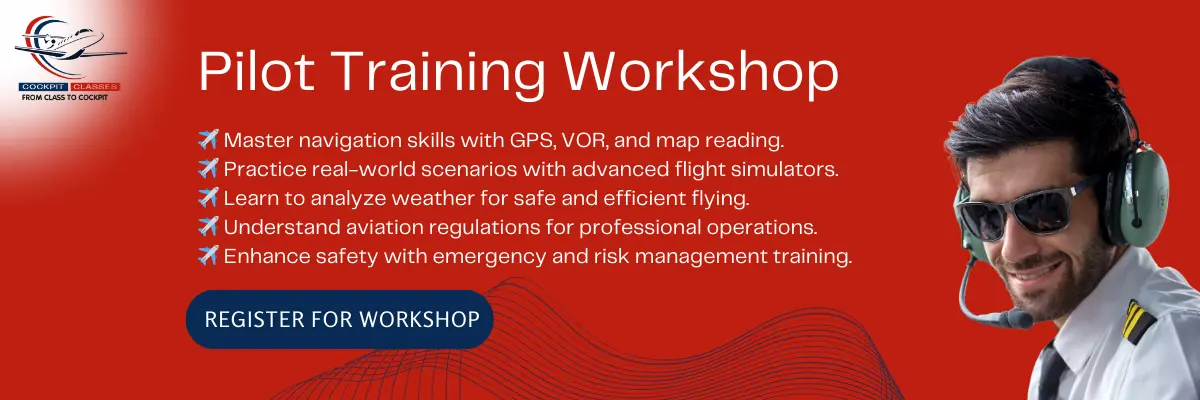Commercial Pilot License
Commercial Pilot License (CPL) Air Navigation Classes
DGCA Certified – Chief Ground Instructor

Commercial Pilot License (CPL) Air Navigation Classes
To earn a Commercial Pilot License (CPL), air navigation classes are a crucial component of pilot training. These classes provide essential knowledge and skills for safe and efficient flight navigation. Students learn to use maps, charts, and navigation techniques such as pilotage and dead reckoning, alongside mastering instruments like GPS, VOR, and ADF for accurate data interpretation.
Key Topics Covered:
- Navigation Basics: Principles of air navigation, including maps, charts, and coordinate systems.
- Navigation Methods: Techniques like pilotage, dead reckoning, and electronic navigation systems.
- Navigation Instruments: Operation and interpretation of GPS, VOR, and ADF systems.
- Flight Planning: Creating detailed plans, accounting for weather, airspace, and fuel requirements.
- Regulations: Navigation-related aviation rules and procedures.
- Meteorology: Understanding weather impacts on navigation and flight safety.


Overview of - Commercial Pilot License (CPL) Air Navigation Classes
Air Navigation is a critical component of Commercial Pilot License (CPL) training, equipping aspiring pilots with the skills to navigate safely and efficiently across various flight conditions. These classes combine theoretical knowledge and practical applications to ensure pilots can plan and execute flights with precision, using both traditional and modern navigation techniques.
Key Objectives of Air Navigation Classes
- Develop Foundational Knowledge: Understand the principles and methods of air navigation.
- Master Navigation Instruments: Learn to operate and interpret GPS, VOR, ADF, and other navigation tools.
- Apply Practical Skills: Gain experience in flight planning, route management, and decision-making.
Core Topics Covered
Fundamentals of Air Navigation
- Understanding latitude, longitude, and coordinate systems.
- Basics of map reading and using aeronautical charts.
- Concepts of magnetic variation, true and magnetic headings.
Types of Navigation
- Pilotage: Navigating visually using landmarks.
- Dead Reckoning: Calculating positions using speed, time, and direction.
- Radio Navigation: Using systems like VOR (VHF Omnidirectional Range), NDB (Non-Directional Beacon), and ADF (Automatic Direction Finder).
- Satellite-Based Navigation: Mastering GPS and other satellite navigation systems.
Navigation Instruments
- Detailed understanding of flight instruments used for navigation.
- Techniques for interpreting instrument readings during different flight phases.
Flight Planning
- Creating comprehensive flight plans, including route selection, fuel calculations, and contingency planning.
- Incorporating weather data, airspace restrictions, and aircraft performance factors.
Meteorology in Navigation
- Impact of weather conditions on navigation.
- Interpreting weather charts, forecasts, and wind data for effective planning.
Aviation Regulations and Procedures
- Understanding navigation-related rules and compliance with local and international aviation standards.
- Procedures for air traffic communication and navigation under Instrument Flight Rules (IFR).
Training Structure
Theoretical Instruction
- Classroom-based sessions to understand concepts and instruments.
- Detailed analysis of real-world navigation scenarios and challenges.
Practical Simulations
- Use of flight simulators to practice navigation techniques.
- Scenario-based training to handle in-flight navigation adjustments.
Hands-On Flying
- Real-time application of navigation skills during solo and cross-country flights.
Outcomes of Air Navigation Classes
- Proficiency in traditional and advanced navigation methods.
- Confidence in flight planning and handling in-flight navigation challenges.
- Ability to operate aircraft safely in diverse and complex airspaces.
Mastery of air navigation is essential for obtaining a CPL and forms the foundation of a professional pilot’s career. These classes prepare students to navigate efficiently and confidently, ensuring safety and reliability in all flight operations.

